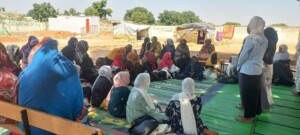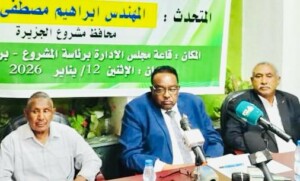UNHCR starts moving 70,000 Sudanese refugees from Yida
The United Nations High Commission for Refugees (UNHCR) in South Sudan has started the registration procedures for the moving of refugees who have fled from South Kordofan’s Nuba Mountains. The 70,000 Sudanese have been residing in Yida camp, just over the border, since 2011.
The United Nations High Commission for Refugees (UNHCR) in South Sudan has started the registration procedures for the moving of refugees who have fled from South Kordofan's Nuba Mountains. The 70,000 Sudanese have been residing in Yida camp, just over the border, since 2011.
The UNHCR plans to move a large part of the refugee population to a camp in Pamir, 10 kilometres from the border between Sudan and South Sudan. The registration process began on the first of February and will last until June, when the agency plans to close Yida.
Yida, a settlement in South Sudan’s Unity state, hosted about 20,000 refugees from South Kordofan end 2011, after war broke out between the Sudan People’s Liberation Movement-North (SPLM-N) and the government. UNHCR and the South Sudanese government say Yida has never been officially recognised as refugee camp and never can be, despite the current 70,813 refugees registered there. 
In the past UNHCR cited concerns of overpopulation and security problems in Yida as one of the reasons for the resettlement, according to Nuba Reports. Its former head of operations in Unity State, Marie-Helene Verney, voiced concerns of potentially having 100,000 refugees in one place.
In December last year, the UNHCR and the South Sudanese Refugee Affairs Commission were known to already push Yida residents to resettle in the Ajuong Thok refugee camp and Pamir, where aid services are active.
An agency report on 31 January this year shows that 848 of all 977 new arrivals from South Kordofan in Yida camp were registered and relocated to Ajuong Thok camp.
Developing camps
Ajuong Thok, also in Unity state, has expanded with the aid of UNHCR and its partners led by the Danish Refugee Council. 33,469 refugees currently live there. At the end of 2015, the UNHCR expected another 19,000 more to arrive during 2016, some coming from Yida camp.
In Ajuong Thok, refugees are housed on large blocks of land with services including water supplies and markets. There are kindergartens, a secondary school, and a fourth primary school is underway. Food distributions take place monthly. But resources are stretched, the agency said.
One month ago in Pamir camp in Upper Nile state, the UNHCR reported that 14 km of internal roads were completed and three of the planned four boreholes for the new refugee camp were drilled.
Refugees protest moving
However, Nuba refugees in Yida refuse to leave the place. They claim that armed nomadic pastoralists are present in the new area, and fear that the nearby new headquarters from Alliry, which is under the control of the Sudanese government, may lead to conflict.
Ajuong Thok is only 45 kilometres away from a Sudanese army base, Ismail Hussein, Deputy Chairman of the Yida Refugee Council said at the end of 2015. “Those are the very people the Yida refugees fled from in the first place.
“The future Pamir camp is located in an area with several nomadic tribes who are in conflict with Yida residents,” he added. “You find [there] people and tribes who kicked us out of our homeland in the Nuba Mountains.”
One of the refugees told Radio Dabanga: “The UN agency has taken several measures to exert pressure on the refugees to accept their proposal. They reduced food rations to half, which is already happening.”
The refugee said that no services have been provided to them, in exception of the drilling of five wells for water and land preparation activities. Farming is increasingly important for the refugees to have enough to eat as the World Food Programme (WFP) has struggled with funding and cuts food rations.
Related:
South Sudan to resettle 70,000 Nuba refugees (22 December 2015)











 and then
and then